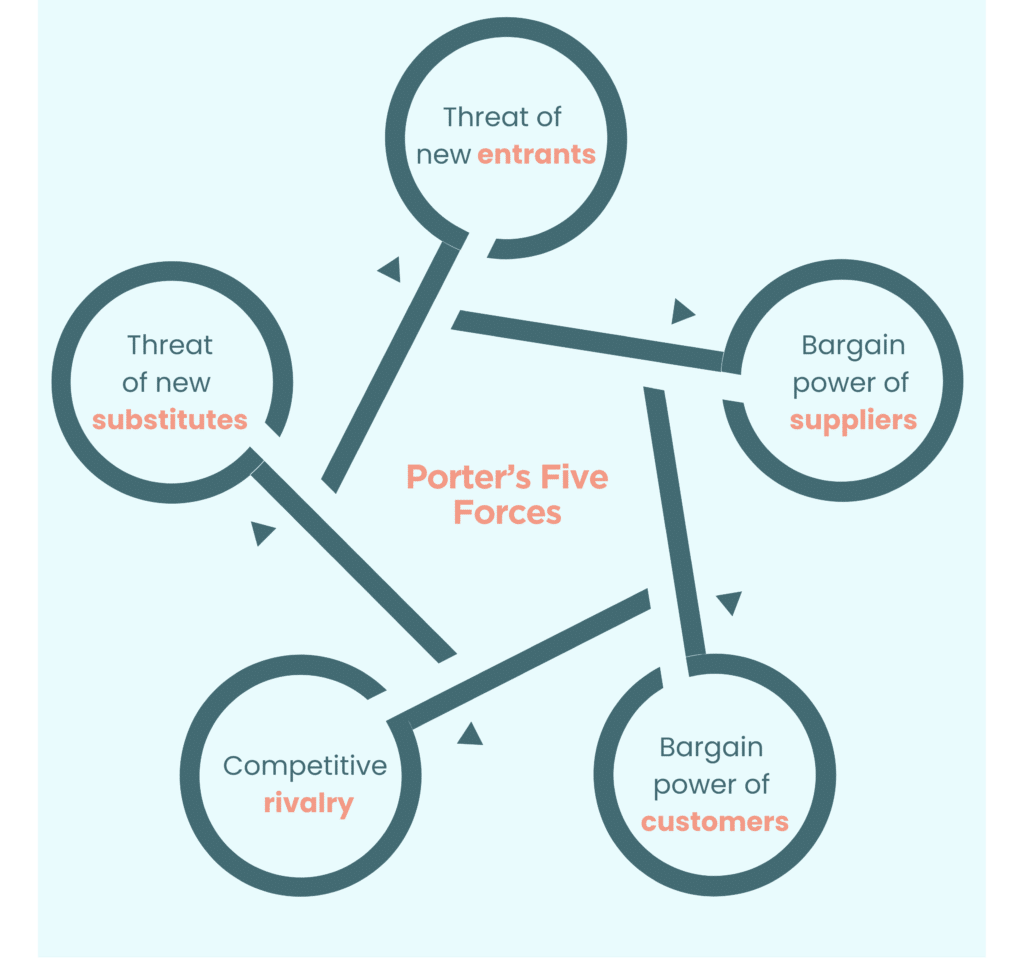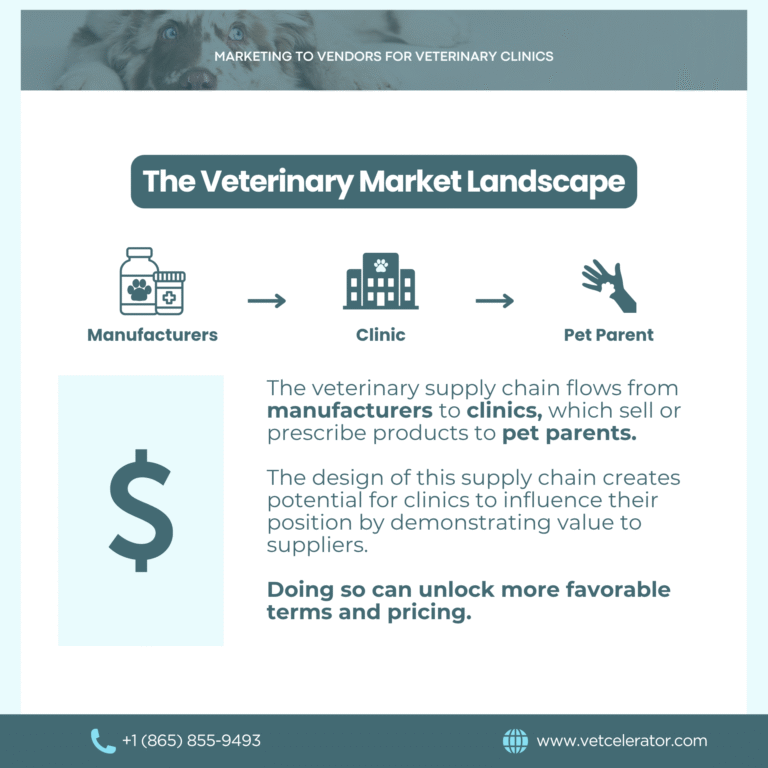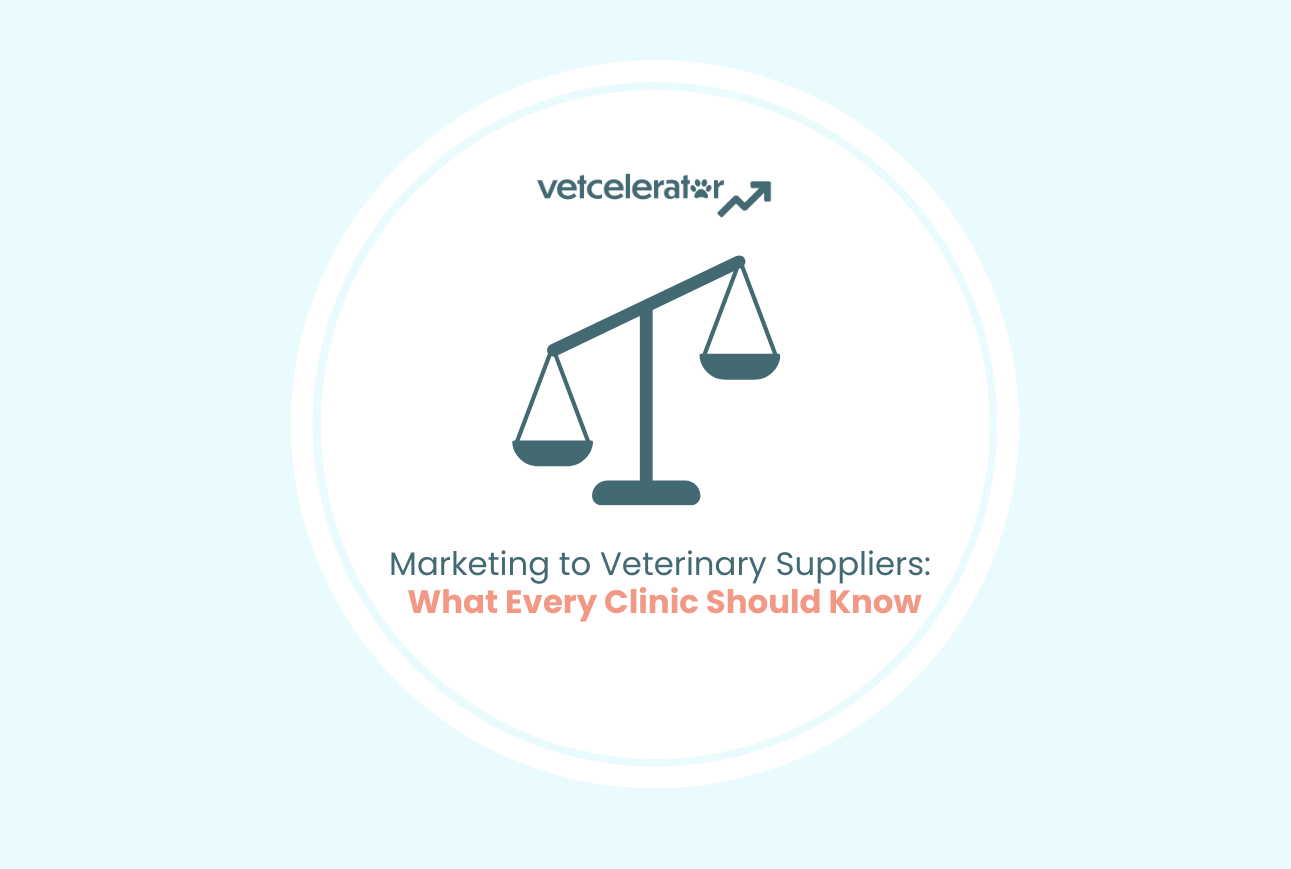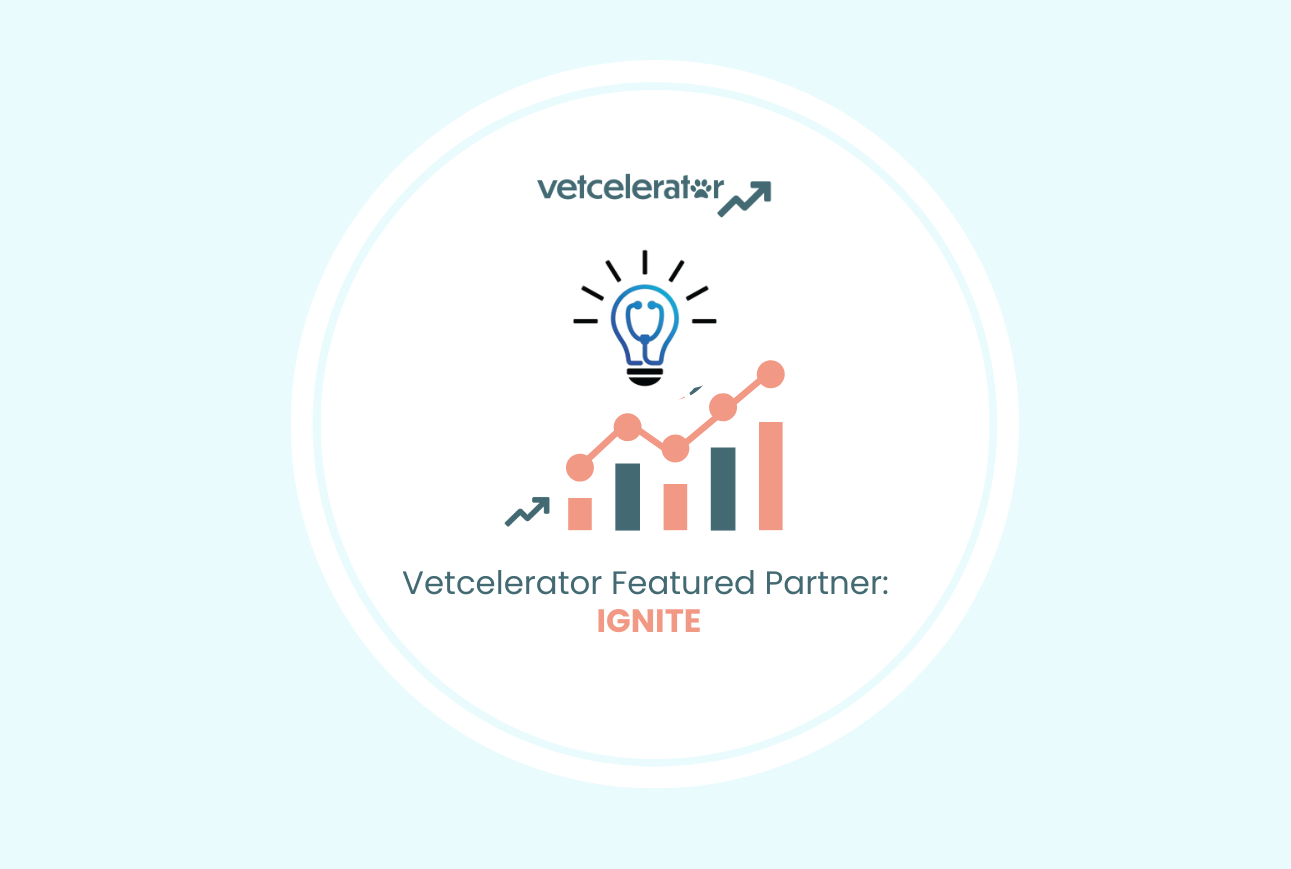
Marketing to Vendors sounds like a strange concept, but since every business problem is a marketing problem, this article introduces the concept of marketing to veterinary suppliers. This strategy helps clinics reduce their cost of goods by improving vendor alignment, strengthening purchasing power, and lowering service costs for suppliers. It’s one of the most underutilized growth levers in veterinary medicine.
What is Vendor Marketing in Veterinary Practice?
The veterinary supply chain is straightforward but highly influential. Manufacturers produce goods that flow through distributors to clinics, which prescribe or sell these products to pet parents. This supply chain’s design creates potential for clinics to influence their position by demonstrating value to suppliers. Doing so can unlock more favorable terms and pricing.
Power Dynamics: Suppliers vs. Clinics

Michael Porter’s Five Forces framework helps explain the competitive environment between clinics and suppliers:
- Veterinary Clinics operate in a highly competitive space with small market shares, significant customer diversity, and often thin margins.
- Veterinary Suppliers, meanwhile, are fewer in number and hold a larger share of the market, enjoying advantages of scale, market position, and efficiencies.
Porter would tell you “to look at the relative power of buyers and suppliers in an industry when evaluating the competitive environment to look for industry attractiveness or positioning strategy.”
In short, suppliers have pricing power over clinics, a dynamic that clinics can mitigate by marketing themselves as valuable, low-cost partners for vendors.
Why Market to Vendors?
By marketing to vendors, your clinic positions itself as a valuable client, able to lower supplier acquisition and service costs. With an effective approach, clinics can convince suppliers of their reliability in ways that reduce costs for both sides:
- Volume Commitments: By consolidating orders or committing to higher volumes, clinics demonstrate the potential for steady demand.
- Reduced Service Costs: Clinics that simplify processes or align with supplier logistics make themselves easier and less costly to serve.
Positioning your clinic this way can improve your supplier terms, opening up cost savings that directly impact profitability.








The Numbers Speak Volumes

Veterinary clinics often find themselves at a pricing disadvantage when negotiating with suppliers. Suppliers, who are fewer in number and control large market segments, can wield significant influence over prices for essential products and services. An analysis of a 2023 annual report from a major supplier highlights this point: while the word “price” appears 20 times, “product” appears just twice, emphasizing how central pricing is to the supplier’s business model.
This pricing control is underscored by inflation: while the Federal Reserve aims for a 2% inflation rate, the veterinary supply industry has historically operated around 5%, sometimes reaching up to 7-8%. Clinics need a strategy to navigate this reality and make the best of their market position.
One key difference between clinics and suppliers is scale. Clinics represent a smaller fraction of the overall veterinary industry and have smaller budgets for marketing and sales. On the other hand, suppliers not only hold larger shares of their markets but also bear high costs for sales and customer service, especially for premium brands. These costs are passed along, adding to the pricing pressure clinics face.
This highlights why marketing to vendors can be an effective approach for clinics. By using marketing principles to engage with suppliers, clinics can aim to lower costs in two main ways:

Demand-Side Reduction
Clinics can commit to larger order volumes, providing suppliers with predictable demand.

Supply-Side Reduction
Clinics can position themselves as low-cost clients by reducing the supplier’s acquisition or service costs.
To make the case compelling for suppliers, it’s helpful to consider “customer acquisition costs” (CAC)—an area public veterinary suppliers often don’t disclose but would likely benefit from lowering. CAC includes all marketing, sales, and service expenses to secure a customer, divided by the number of customers acquired. Once the clinic is an established customer, the focus shifts to “post-acquisition value,” or the lifetime value of profit that customer brings.
For a clinic, marketing to a supplier effectively involves demonstrating how their business will reduce the supplier’s CAC or improve post-acquisition value through increased purchases or lower servicing needs. In return, the clinic can aim to secure better pricing on goods or services, improving its overall profitability.
How to Market to Vendors

1. Unified Ownership
Multi-clinic owners can negotiate better terms by centralizing purchasing across their locations, turning many smaller purchases into a single, high-volume deal that’s appealing to suppliers.

2. Group Purchasing Organizations (GPOs)
For independent clinics, joining a GPO allows access to bulk discounts even without shared ownership, often reducing per-unit costs.

3. Data-Driven Platforms
Using data aggregators can streamline the search for suppliers, saving time and ensuring better transparency on pricing and terms.

4. Collaborative Advertising
Some clinic groups collaborate with vendors on joint advertising efforts, which reduces costs while enhancing reach.
Vetcelerator actively supports clinics in using these strategies to reposition themselves in the vendor relationship, boosting their purchasing power and profitability.
Putting These Strategies to Work
Join Vetcelerator’s GPO today to reduce your supply costs, strengthen your vendor relationships, and improve your clinic’s profitability.




